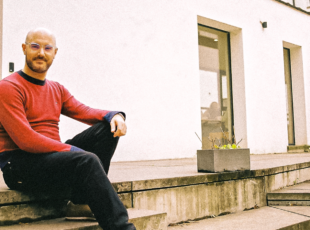The immersive serving heritage

Article author :
A look back at two days spent in Metz on the occasion of RICCI, the International Meetings on Culture, Knowledge and the Immersive. What we saw, what caught our attention, and the major questions raised.
On October 4 and 5, the kingkong team made its way to Metz for the second edition of RICCI. This event is an initiative of the Grand Est Region and is steered by the Bureau des Images, a network of professionals, training programmes and support provision in the CCI (cultural and creative industries) and visual sectors. We were welcomed at Bliiida, a third place of inspiration, innovation and collective intelligence located just a few steps from the historical centre of Metz. Their 30,000m² site consisting of former warehouses has been converted into a collaborative and creative work space hosting artists, fledgling entrepreneurs, start-ups and artisans. With its makerspace and ultra-dynamic team, they incubate and provide support for eclectic projects rooted in the CCI sector, the transition to the green economy, social innovation and media being birthed in the Metz conurbation, and more widely in the Grand Est region.
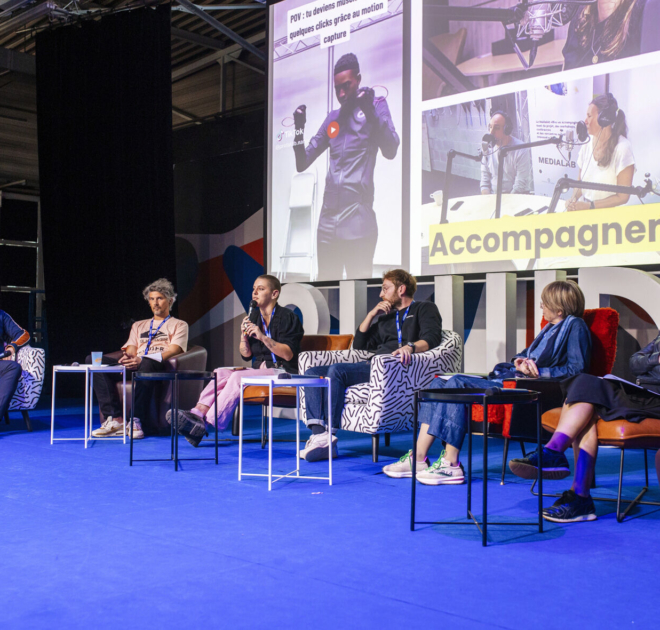
The RICCI are structured around conferences, demonstrations, workshops and networking. Through these meetings, the aim is to raise questions about public engagement and area attractiveness by means of immersive experiences. In the meetings, several questions of great importance to producers and artists are raised, ranging from the economic model of this type of project to the sustainable development of technologies judged to have a heavy carbon footprint (3D, AI, real-time).
What, in the end, is the immersive?
On the first day a collective intelligence workshop was held, involving the first people to arrive. The subject? The immersion of the regions: issues and contributions at the level of the revitalisation of regions and public engagement. The workshop was centred on three major focal points: the public (diversification and social and economic accessibility, etc.), the experiences (the potential narratives to enhance the value of a site, the relevance and the quality, etc.) and the sites (attractiveness, economic costs and benefits, eco-responsibility and sustainability, etc.). After a few stop-start snatches of conversations, within our working group a question was raised concerning one vital aspect: what, in the end, is the immersive?
After several members of the group, all immersive and digital professionals, had attempted definitions, the key element boiled down to the fact that immersiveness does not always involve the digital. The need to disconnect is a genuine factor highlighted by the public. There was also general agreement on the fact that it was necessary to start with a clean slate, in other words, to listen to the public, and take the time to base our projects on their needs. Without limiting the experiences to technological development, the wish is primarily to bring to life an experience in and for itself.
Working hand in hand
In bringing together the professionals of the Grand Est Region, a shared wish was clearly felt during the discussions, panels and workshops: to pool strengths, knowledge and talents. This need to share with our neighbours, and first and foremost retain the talents within our regions, is expressed by the desire to bring the area to life and above all to develop the technologies hand in hand.
Several people even suggested joining forces in order to create a global network enabling a gathering together of the talents, resources and training programmes! The order of the day was collaboration and co-production.
Sustainability in the immersive: the thousand point question
Day 2. We decide to go and follow a round table on eco-responsibility within the immersive experiences creation industry, with CNC, Tiny Planets, Game Only and Super Idée having been invited to participate.
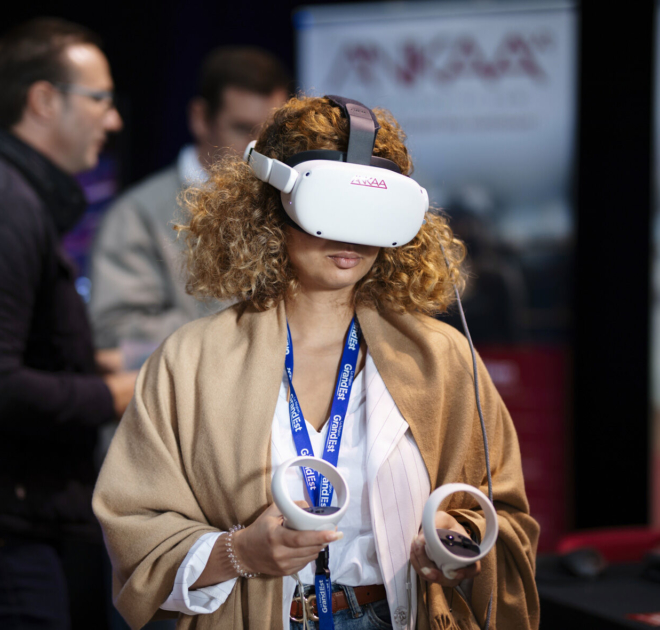
The speakers took the time to explain the various initiatives they had established in terms of eco-responsibility. Their proposals were very concrete. Here is what struck us in particular:
Landia Egal from Tiny Planets shared the results of their research into the product life and consumption cycle of a virtual reality headset and its carbon footprint. Their manufacture is similar to that of a smartphone, but it is in its consumption that the difference lies. A virtual reality headset is not used at the same frequency as a smartphone BUT very quickly becomes obsolete, due to the constant evolution in the technology. BUT BUT BUT, you could ask all the questions in the world and look into the subject from every angle to come to the conclusion that the impact of VR on the ecology is a mere drop in the digital ocean. It nevertheless remains vital to think through the roll-out conditions of these new platforms.
Tiny Planets is part of the change at its own scale. One of the organisation’s works presented at Venice in 2022 is upcycled, for which the company ran a carbon calculator. This represented 50 tons of CO2, half of which was due to its being distributed at Venice and the team’s travel requirements.
With the same objectives as the carbon footprint calculator, Game Only has created the first environmental footprint calculator for video gaming, and intended for digital studios more broadly: Jyros. This tool, available since October 6, enables an ultra-complete panoramic view of the production, distribution and consumption of the video game industry.
Mathieu Müller gave a keynote talk on Unity, the real-time game engine which offers impressive breakthroughs and possibilities in terms of the rendering of 3D animation and its impact on the ecology.
Compared to Maya, excessively energy-intensive, the rendering of 25 minutes of animation film in real time represents 350 g of CO2.
Journey into the heart of immersion
During the RICCI, we were also able to see several immersive projects presented at the stands, involving a variety of experiences. The following were an instant hit with us:
Skill Lab is a production company and a creative studio based in Luxembourg, managed by Gwenaël François and Julien Becker. The studio presented two projects in virtual reality. In the first, named Errance, you journey across a mysterious planet to the rhythm of an original musical production composed by Ryvage.
Retorik is a digital support service dedicated to tourism and cultural outreach whilst also providing business companies with assistance. Of human appearance, an artificial intelligence adapts to the needs and responds to the user’s voice commands. Thanks to a comprehensive database, this AI will be able to provide you with all the information, tips, advice and the must-see sites of interest in the surrounding vicinity.
The Strasbourg-based creative studio working in sound, Les Ensembles 2.2 has created open-air sound fictions. This geolocated project offers suggestions for roaming around the lands of the Grand Est region thanks to the dedicated application GOH. Several artists have worked together to produce made-to-measure routes depending on the area’s heritage, the constraints of the terrain and in relation to the local residents.
Tucked away in another part of the Bliiida courtyard was the video game studio Random Bazar. The prototype of ‘L’allumeur de réverbère’ (Lamplighter) was installed in a dark recess to allow the game to be projected onto a black screen. Kapla sets were placed there, to be turned into game controllers and allow the little character to move from one flying island to another. By physically moving the pieces of wood, the gamer constructs a pathway and poetically takes part in the character’s expedition, with the sole goal being to light the streetlamps.
Preservation VS. disconnecting
Being at the centre of the theme covering the two days, the question of the preservation of the heritage was raised on more than one occasion. Be it through the innovative initiatives of participatory projects or on the part of the museums, the era of digitalisation opens up new opportunities for the preservation of heritage and the showcasing of regions and folklore.
The Grand Est Museums Association presented its platform allowing the collections to be digitally centralised and a new form of cultural consumption thanks to the high quality digitalisation of its works. A cultural wealth looking to use tech as a means and not as an end in itself. We were able to discover the cultural richness of new ways of consuming such as mapping or soundwalk devices. Despite our career choices being centred on the digital, the wish to disconnect is collective.
A story, projects or an idea to share?
Suggest your content on kingkong.
also discover

Three days at the Wallifornia MusicTech Summit, in the “Cité Ardente”
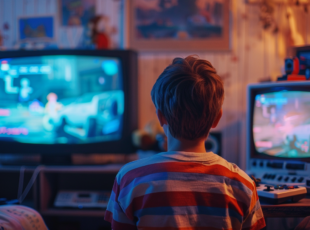
When the video game (over)does nostalgia
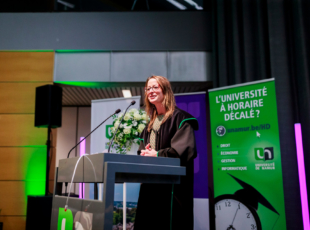
Amélie Lachapelle: ‘the digital transition will have to be green or it will not take place’
